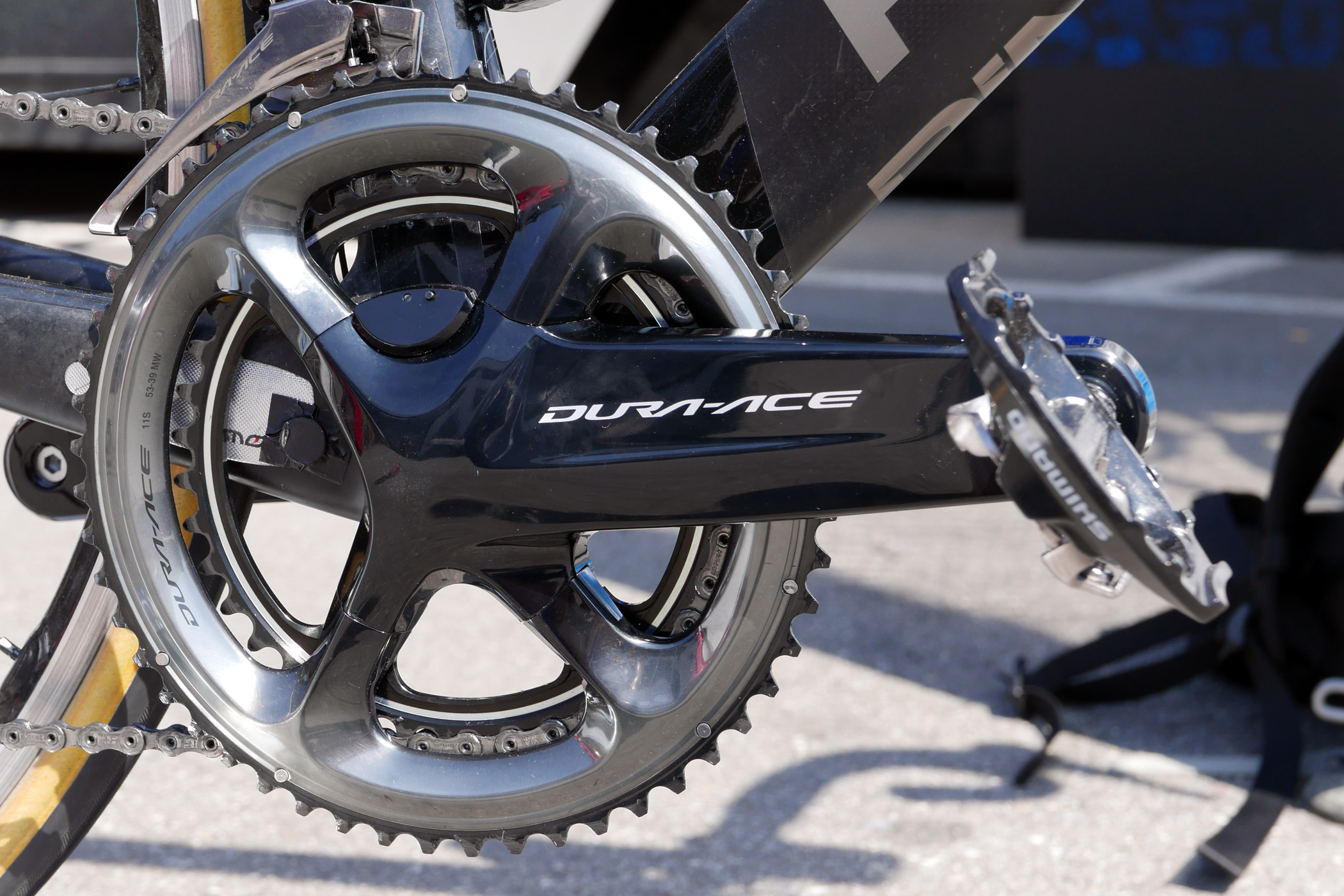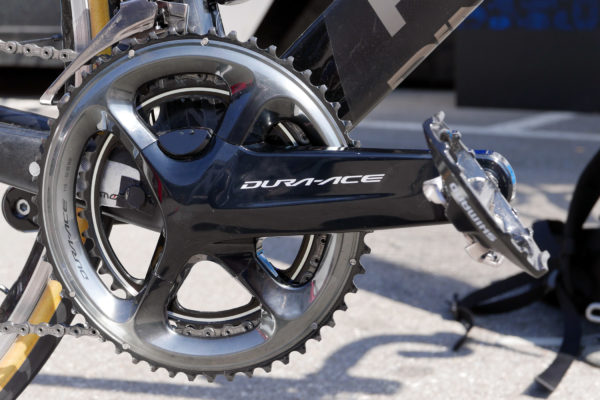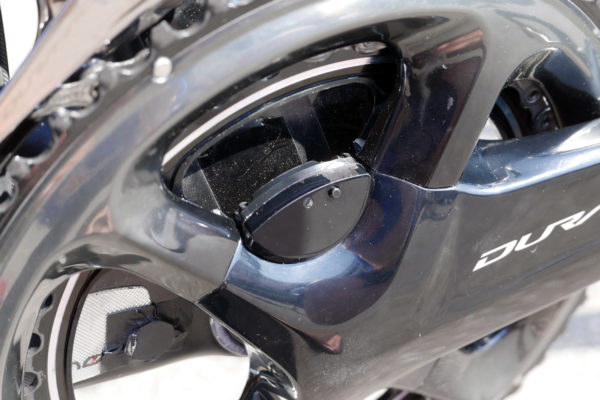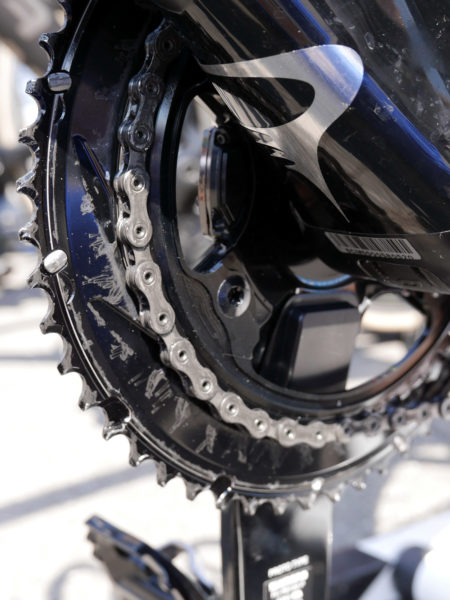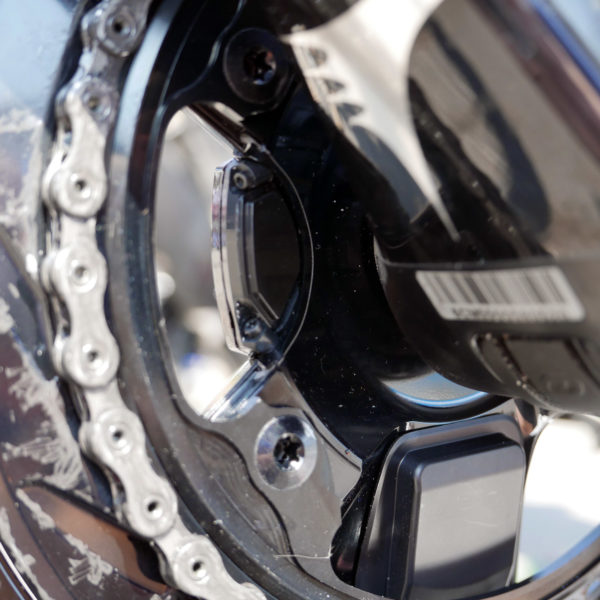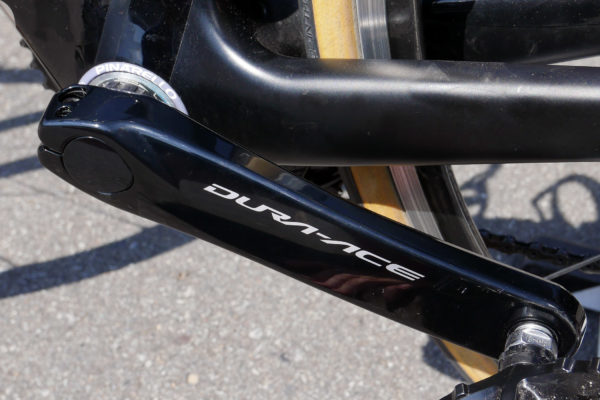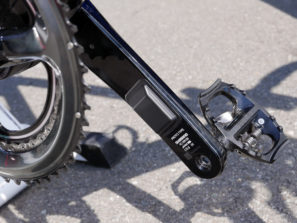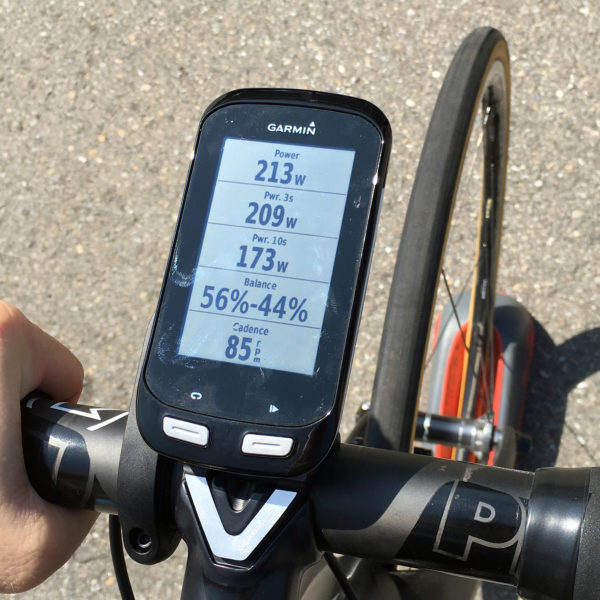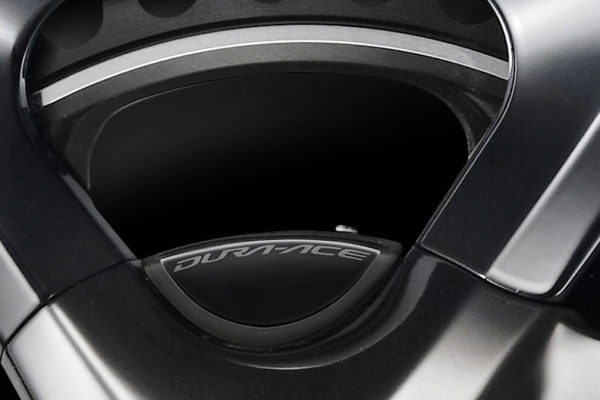We were first really introduced to the new integrated power meter version of Shimano’s new R9100 Dura-Ace crankset just a few weeks back at the introduction of the new groupset. But at the time the power meter itself seemed pretty hard to come by, and details were still few and far between. All we really had seen were studio photos from Shimano, but now we have had a chance to get on a power meter-equipped bike and we have a bit more real info. Take a closer look at what makes the R9100-P tick, and when you might be able to get one, after the break…
Shimano didn’t mention it to us, but the power meter does require a frame magnet for cadence updating, which we’re hoping will get a more elegant solution. The sending unit includes a single LED that signals when it first wakes up, and when pairing. It also gets a single button that provides a one step zero reset from the transmitted body for easy everyday functionality.
The tech that makes them work looks very similar to that of Pioneer, even though they were not developed as partnership. Shimano also reassure us that based on the location of the sensors on the back of the driveside crank, it offers full compatibility with all of their standard and compact rings, and chainrings can be easily swapped without affecting the performance of the power meter.
While the standard crank will offer more chainring sizing options, the power meter version will come standard with either 50/34, 52/36, or 53/39 options.
Both sides of the crank are connected by a fixed wires to the internal spindle rechargeable battery for reliability, and a proprietary snap-on magnetic charging cable delivers power without ever having to expose cable connectors. Shimano was pretty set on making it totally waterproof in pretty much any conditions (and that apparently was most pushed to the extreme by how some pro mechanics wash the bikes) so you don’t have to open anything to keep it running trouble-free.
As we saw earlier the wide boxy shape of the new Dura-Ace crankset was the result of an analysis of the stresses in the actual arms themselves, and not a result of space needed to fit strain gauges or communication tech inside. But all of that real estate did give Shimano a lot of space behind which they could hide the sensors for a clean overall look. And in fact the mostly external sensors are then just adhered along the wide flat inner sides of the arms.
The cranks talk through both Bluetooth & ANT+to your computer of choice. We rode one set up with a Garmin Edge head unit and displaying the core, simple power metrics, but plenty more detail is of course possible.
The functioning version we saw is still pre-production. That means that even though everything looked nice and finished and worked without any issues, it was missing that last touch of Dura-Ace branding that will grace the final version.
Even the pros aren’t really on the new power meter cranks as they are quite available in any numbers yet. But Shimano tells us that they are on track to deliver to their sponsored pro teams to be ready for the January 1 start of a new year, and what that means for us mortals is that it will coming our way too. The expect that by the end of February it will be available to all.
